Manufacturers Explore New Tech and Best Practices at MLC Master Class Series Events
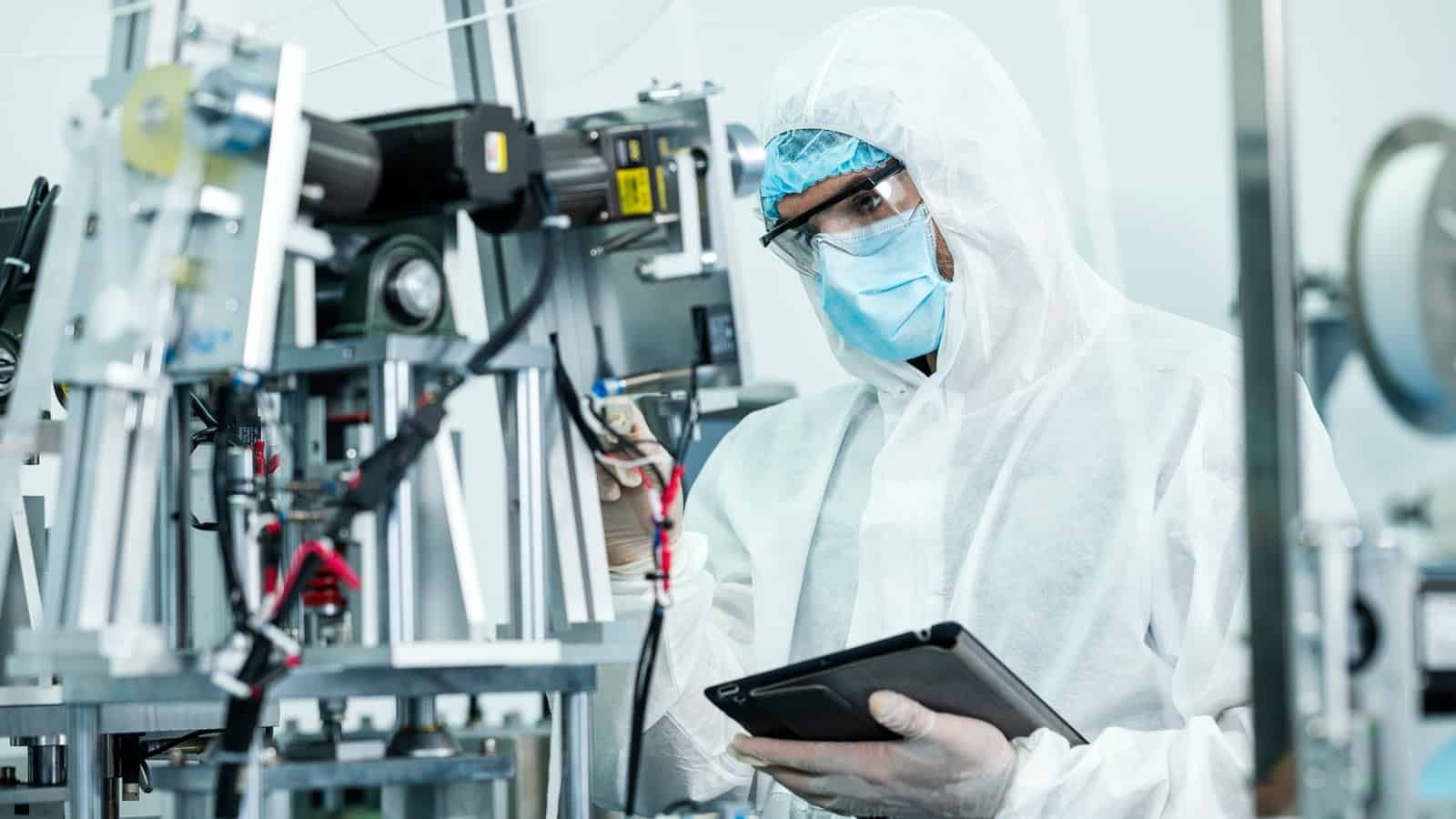
To help manufacturers navigate Manufacturing 4.0, the NAM’s Manufacturing Leadership Council launched the MLC Master Class Series. This series includes regular virtual events designed to explore new technologies, address pain points and showcase opportunities—all while connecting forward-thinking manufacturing leaders. Sessions in the series include interactive webinars, Technology Deep Dives and Tech Talks.
Webinars: With formats such as panel discussions, use cases and executive interviews, the Master Class webinars are especially beneficial to manufacturers who want to learn about the innovative technologies that have the potential to enhance their operations. These virtual sessions are a chance to hear directly from the digital manufacturing experts moving our industry forward. Content and discussions during these sessions provide insights on identifying, evaluating and implementing new technologies as well as providing strategies for leadership in the age of digital progress.
Deep dives: Deep dives are 60-minute interactive sessions that continue and expand the learning necessary to be successful with new technologies. They provide a more in-depth understanding of specific technologies, where they can be applied and how they can lead to new competitive advantages. Each deep dive also features short breakout sessions focused on either “How Do I Get Started?” or “How Do I Further Leverage?”
Tech talks: Tech talks are 30-minute candid conversations with subject-matter experts who provide insights into how specific technologies are designed to accelerate and drive the journey to Manufacturing 4.0. From purpose and adoption, to challenges with implementation and best practices on operations, MLC’s tech talks will enable you to stay abreast of new and evolving manufacturing technologies within the marketplace.
Master Class events take place throughout the year. Manufacturers at all stages of digital transformation are invited to participate in the entire series or choose individual events based on their needs and interests. To see upcoming classes and access recordings of past sessions, click here.
How Manufacturers Can Navigate Supply Chain Challenges

As the global supply chain, worker shortage and wage inflation challenges many had hoped were transitory dig in their heels, manufacturers everywhere are wondering how best to get around them.
Panelists at “Successfully Navigating Current Supply Chain Disruptions,” a webinar hosted by the NAM’s Manufacturing Institute, Manufacturing Leadership Council and professional services firm PwC, sought to answer that question.
We rounded up the speakers’ top tips for manufacturers seeking to sustainably and profitably maneuver the several sizable hurdles they still face going into 2022.
- Break down siloes. Now that manufacturers are having to replace traditional supply chain models, changing their company operations to have staff work across siloes is more important than ever, said PwC Partner Debjit Banerjee.
- Expect disruption. If it taught us nothing else, COVID-19 conveyed the importance of being prepared for the unexpected. Going forward, manufacturers would do well to not just plan for the possibility of disruption, but to assume it will come. To that end, preplanned “differentiated customer service” and disruption drills should become the norm, Banerjee said.
- Advance your supply chain planning. Increasingly, Nexteer Automotive, a global maker of steering and driveline components, is focusing on advanced supply chain planning, programs that help predict shipments, supply and demand for smoother operations, said Nexteer Automotive Vice President of Global Manufacturing Operations Dennis Hoeg. With it, “decisions can be made smarter, earlier.”
- Automate. Manufacturers should consider automating repetitive “transaction” work and reserving their employees for analytical tasks that only humans can do, according to Hoeg.
- Balance agility and resilience. Before the pandemic, “we were working on a strategy that was based on agility,” said Rockwell Automation Chief Supply Chain Officer Ernest Nicolas Jr. “Through the pandemic … we had to reprioritize. We had to take a step back to balance agility and resilience.” Manufacturers that want a better agility-resilience balance can do so “through data, process and technology” enablement, according to Nicolas.
- “Relentlessly prioritize.” Nicolas so believes in this advice that he ended his presentation with it. “There’s so much going on right now; we want to be certain we manage our priorities,” he said. “So, there’s a lot we’re saying ‘not now’ to …. but it’s not a matter of ‘no.’ It’s a matter of, ‘We’ve got to get these things finished so we can lay the foundation’” in this new normal.
What Will Manufacturing Look Like in 2030?
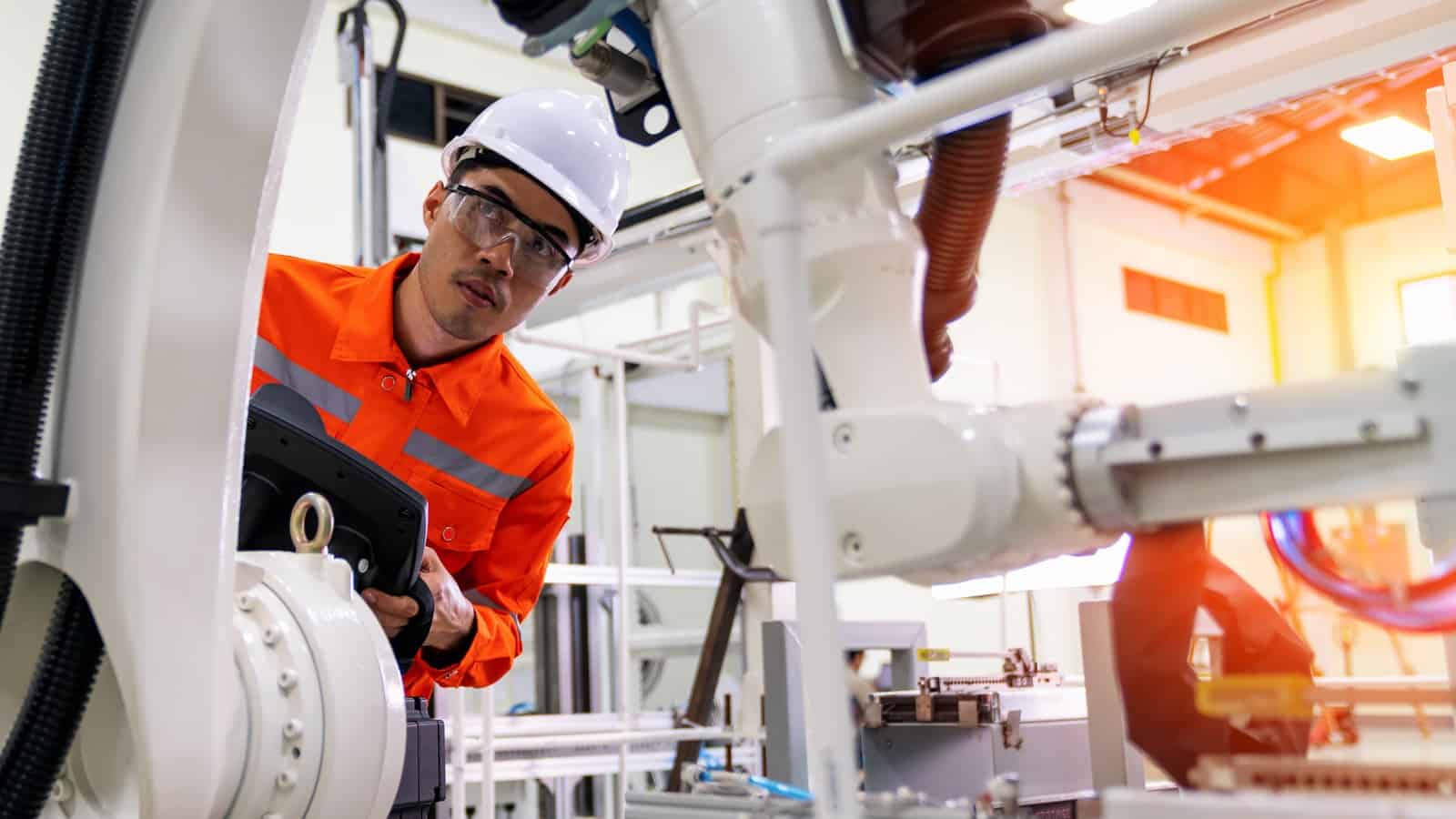
Given the many uncertainties brought about by COVID-19, supply chain disruptions, labor shortages and more, it might seem as though what happens in the coming decade is anyone’s guess. But on closer examination, there are signposts signaling some of what’s to come—and a closer look at them can help manufacturers plan for the coming years.
At the recent “Manufacturing in 2030: The Shape of Things to Come” event hosted by the NAM’s Manufacturing Leadership Council, in-person and virtual attendees heard from experts, examined trends, explored technologies and discussed upcoming challenges. The goal: to look into the future of manufacturing.
“We can’t be certain about what tomorrow will bring, let alone what might be in 2030,” said MLC Co-Founder David Brousell in his opening remarks. However, “we can project or extrapolate based on current trends and conditions, with a reasonable amount of probability, what the shape of manufacturing will look like in 10 years’ time.”
Why Manufacturing in 2030: Everything in manufacturing is changing, driven by technologies capable of giving decision makers more information than ever before. Prior to the pandemic, companies were already making changes to their organizational structures, shifting from hierarchical models to more collaborative means of organizing people and processes. COVID-19 has only accelerated this change.
Brousell explained: “All around us, conventional notions of what can be accomplished in production … are being reimagined.”
Challenges and opportunities: Upcoming challenges discussed included continued global supply chain disruptions, climate change and the redefinition of the human–machine relationship. Speakers examined the technological, organizational and leadership characteristics that can set manufacturers apart and provide them with a competitive advantage.
What’s next: The MLC will soon launch its yearlong “Manufacturing in 2030” project, which will help manufacturers explore, understand and plan for the future of the manufacturing industry in the next decade.
Said Brousell: “If we do things right in the next 10 years, we have the opportunity to create the greatest engine of manufacturing production humankind has ever seen.”
Vaccine Myth Buster: Nephron’s Michaela Almgren Gets to Work

Michaela Almgren already has two jobs, but in recent months, she’s found herself appointed to a third: COVID-19-vaccine information hub.
A foot in each world: A pharmacist by training, Almgren divides her time between the University of South Carolina’s College of Pharmacy, where she is an assistant professor in the Department of Clinical Pharmacy and Outcomes Sciences, and Nephron Pharmaceuticals, where she is clinical adviser and pharmacy student internship director.
- Owing to her impressive background in drug formulation and analytical method development as a hospital pharmacist, as well as her skills as a lecturer, Almgren has also become a sort of de facto conspiracy-theory debunker when it comes to COVID-19 vaccination.
A go-to for facts: In recent months, in her capacity as both a professor and a Nephron employee, Almgren has given lectures and presentations about COVID-19, its variants and the vaccines—and she’s had significant follow-up questions from audience members. So many, in fact, that colleagues and others she has met teaching and at manufacturing gatherings have come to see her as a voice of reason capable of cutting through the noise.
- “A lot of people just fall into this misinformation mill” about the vaccine, Almgren said. “Typing in something like ‘Dangerous COVID-19 vaccine’ will give you this feed of articles, but it doesn’t mean the vaccine is dangerous.… That’s just how these [search engines] work.”
Convincing and calm: Almgren has been the impetus for the vaccination of several employees at Nephron, which has a 100% vaccination rate.
- “They’d say, ‘Thank you for talking with me. I was unsure about the vaccine, and it made me nervous, but talking with you made me feel that it was OK.’”
Fact vs. fiction: Almgren shared some of the top vaccine-related myths she’s successfully debunked during presentations and other conversations.
- “They have long-term side effects.” Fact: “This is where I talk about how these [vaccine] components don’t stay in your body more than 72 hours. The idea is just to elicit an immune response, and then it’s gone. And think about it on a global scale. If it was so deadly and terrible, by now we would see millions of people dropping dead or getting really sick” as a direct result.
- “They were rushed to market.” Fact: “When you actually look at how the clinical trial was defined, it was very similar to any other clinical trials for other vaccines. No shortcuts were taken. They just compressed the studies and ran them simultaneously.”
- “They’re not safe for kids.” Fact: “As a parent, I can totally understand why people would be concerned” about the vaccine for children, Almgren said. “But the clinical trial is out there, released and published in terms of how Pfizer did it. The data is clear showing the efficacy is there, and the side effects are minimal. If you have no issue with the polio vaccine or the tetanus shot, why is COVID-19 any different?”
- “Natural immunity is better.” Fact: “Natural immunity can be further boosted with the vaccine, and it wanes more than vaccine-induced immunity,” Almgren said. People who have had COVID-19 and get vaccinated “have an even stronger [immune] response.”
The last word: Check out the NAM and The Manufacturing Institute’s This Is Our Shot initiative to find out how you can protect yourself and the people you care about from COVID-19.
“What’s Ahead for 2022?” Predicts Growth, Continued Challenges
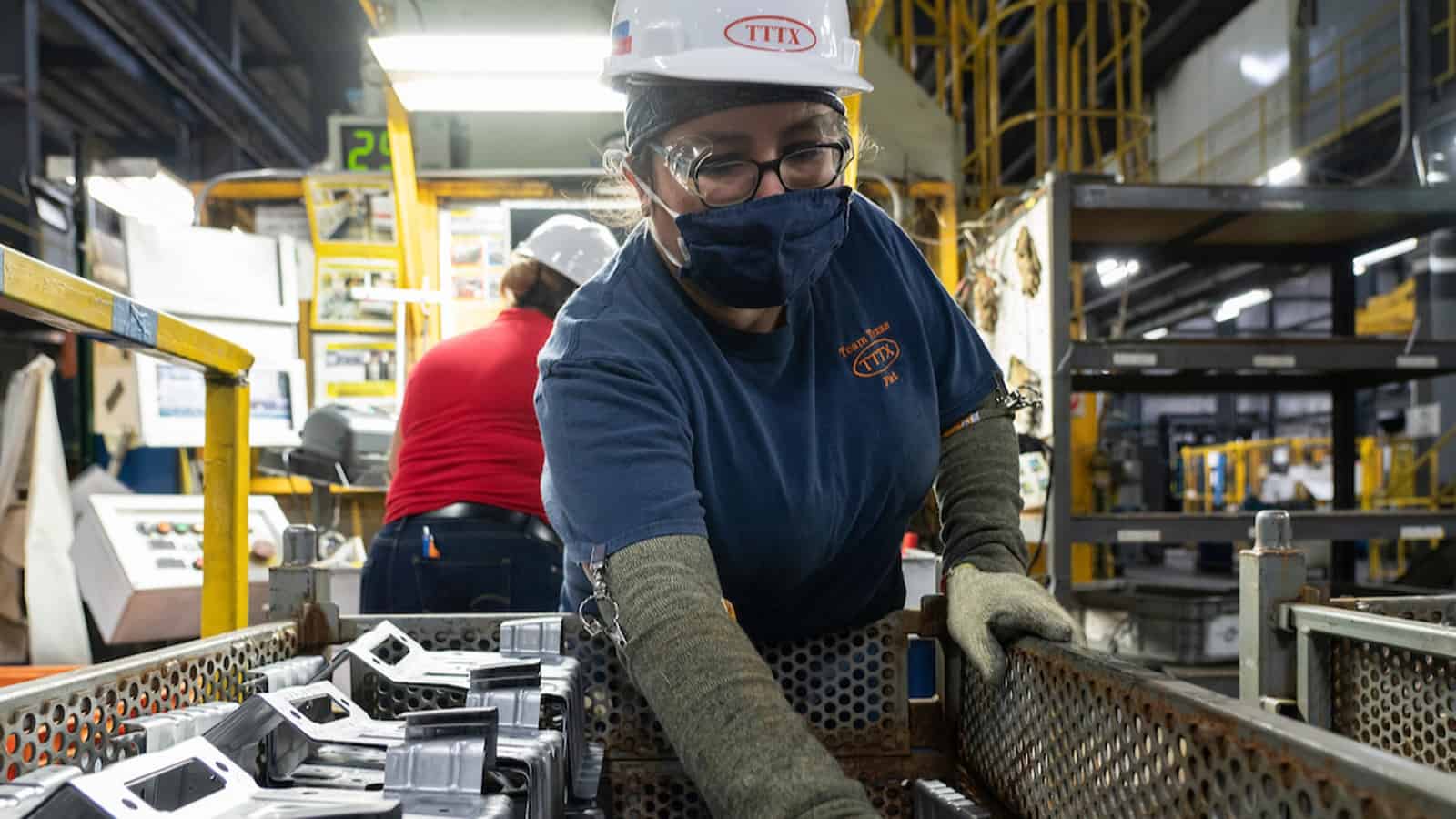
Remote work, digital twins, an increased focus on sustainability and continued talent shortages: these are just some of the trends affecting manufacturers that we’re likely to see in 2022 and beyond, according to a group of expert panelists on the recent Manufacturing Leadership Council’s “What’s Ahead in 2022?” Critical Issues Panel. The NAM’s MLC is a global business leadership network dedicated helping to senior executives leverage digital transformation in the manufacturing industry.
We rounded up some of the top predictions as they pertain to manufacturers.
Economy
- Manufacturing production will continue to be strong, said panelist and NAM Chief Economist Chad Moutray. Toward the end of 2021, it was 2% above February 2020, “a sign that we’re continuing to move in the right direction despite … continuing supply chain challenges.”
- S. labor-force participation is not likely to return “where it was pre-pandemic,” Moutray said. “A fair share of that is coming from retirement … [and] some people who are continuing to worry about child care and schooling.”
- The economy will grow about 4% in 2022, Moutray predicted.
Policy
- Washington will make moves to ease supply chain problems. “Congress knows they must do something to unleash the bottlenecks,” said panelist and NAM Senior Vice President of Policy and Government Relations Aric Newhouse. Legislation could involve workforce-participation incentivization in the form of training programs, as well as giving additional resources to ports.
- The vaccination and testing Emergency Temporary Standard will be “an area for continued movement” in 2022, Newhouse said.
Technology
- Technology will find ways to cope with what are likely to be ongoing workforce shortages, IDC Energy and Manufacturing Insights Group Vice President Kevin Prouty said. These will include automation and technologies to enable virtual and remote work.
- More manufacturers will begin using vision analytics, Prouty said, owing to the increased affordability of cameras and the ease with which footage can be analyzed, shared and moved in the cloud.
- Use of artificial intelligence will start to become the norm among manufacturers rather than the exception, panelist and MLC Content Director Penelope Brown said. “We’re seeing manufacturers move away from that research phase and much more toward a roadmap” for how they’re going to use AI in their plants.
Environment
- There will be greater, more widespread movement toward sustainability. In a recent MLC survey of manufacturers, 87% said they believed manufacturing had a responsibility to society to be more sustainable, Brown said.
Dive in deeper with the MLC’s recently redesigned website, and ensure your team has access to the MLC’s full network and suite of intel, events and other resources.
NAM Announces New Board Leadership
Fitterling and Wengel Take Helm at a Pivotal Time for the Manufacturing Industry
Washington, D.C. – The National Association of Manufacturers announced the Executive Committee of its Board of Directors has elected Dow Inc. Chairman and CEO Jim Fitterling as board chair and appointed Johnson & Johnson Executive Vice President and Chief Global Supply Chain Officer Kathy Wengel as vice chair.
With the industry on the front lines of an ongoing pandemic, supply chain disruptions, a persistent worker shortage and critical policy debates, these manufacturing leaders will take charge at a particularly consequential time.
“Jim and Kathy have well-earned reputations as respected and visionary leaders of renowned global brands. We have many challenges to confront, and they will ensure our industry continues to lead our recovery and leverage new innovations to raise standards of living in America and around the world,” said NAM President and CEO Jay Timmons. “And no matter what comes our way, our association and industry remain steadfastly committed to policies that uphold the values that make America exceptional: free enterprise, competitiveness, individual liberty and equal opportunity.”
“Manufacturing is vital to the long-term sustainability and prosperity of our citizens and our economy and continues to play an increasing role in solving some of the greatest challenges facing society,” said Fitterling. “It is a privilege to represent such a critical sector as board chair of the NAM, which is committed to continually advancing our collaboration across business, government, academia and all stakeholders for the betterment of all people and our planet.”
“The NAM is widely respected for its unique ability to convene key stakeholders and address important challenges across the manufacturing industry,” said Wengel. “Now more than ever, market dynamics and the acceleration of the Fourth Industrial Revolution are providing important opportunities to advance policies that foster growth, promote sustainable manufacturing and ensure readiness and diversity of the workforce of the future. I look forward to continuing to work with fellow members and the incredible staff that make up this organization to confront the challenges of today, while addressing our industry’s needs for tomorrow.”
The NAM Board of Directors guides the association’s leadership in policy advocacy, workforce solutions, legal action, operational excellence and news and insights. More than 200 manufacturing leaders serve on the NAM Board, helping the industry advance an agenda that promotes growth and prosperity for all Americans.
The new board chair was elected at the December meeting of the Executive Committee of the NAM Board. Additionally, the NAM announced significant promotions for key staff members effective Jan. 1, 2022.
-NAM-
The National Association of Manufacturers is the largest manufacturing association in the United States, representing small and large manufacturers in every industrial sector and in all 50 states. Manufacturing employs more than 12.5 million men and women, contributes $2.52 trillion to the U.S. economy annually and has the largest economic multiplier of any major sector and accounts for 58% of private-sector research and development. The NAM is the powerful voice of the manufacturing community and the leading advocate for a policy agenda that helps manufacturers compete in the global economy and create jobs across the United States. For more information about the NAM or to follow us on Twitter and Facebook, please visit www.nam.org.
Manufacturers Announce Addition of Innovation Research Interchange
Key Milestone in Vision to Be One-Stop Shop for Manufacturing
Washington, D.C. – National Association of Manufacturers President and CEO Jay Timmons today announced plans to continue the NAM’s ambitious organizational growth by combining with the Innovation Research Interchange.
The IRI is a leader in helping companies drive innovation and develop the cutting-edge technologies that keep manufacturing strong. The NAM’s growing array of services and thought leadership represents another key milestone in the vision adopted by the NAM Board of Directors to become the one-stop shop for manufacturers.
“The modern association must constantly innovate and evolve to best serve its industry, and with the addition of the Innovation Research Interchange, NAM members will have access to the widest array of expertise and services in the history of the association. With this transformational development, the NAM and our industry will benefit from world-class R&D thought leadership and the proven strategies that the IRI has perfected. The IRI will continue to support organizations in their mission to drive innovation, and it will enjoy access to the largest network of manufacturing companies and leaders,” said Timmons. “This development enhances the value proposition for NAM members and is part of our ongoing commitment to provide programming that exceeds our members’ expectations.”
IRI President Ed Bernstein will continue to lead the IRI’s day-to-day operations as vice president and executive director, reporting to NAM Chief Operating Officer Todd Boppell.
“The NAM is the perfect partner for the IRI,” said Bernstein. “Together, we will be the preeminent thought leadership organization for innovation management. We have a proud history of helping manufacturers and others lead R&D that produces lifechanging products and technologies. As part of the NAM, we will be able to equip even more industry leaders with the tools to ensure that innovation is impactful throughout the entire enterprise.”
The combination with the IRI follows the NAM’s acquisition of the Manufacturing Leadership Council in 2018. “As a member of the Manufacturing Leadership Council, I’ve seen firsthand how the MLC has been strengthened since becoming part of the NAM,” said Entegris Director of Digital Transformation and IRI Board Chairman Steven Moskowitz. “The access to even more resources and an incredible network has been invaluable—especially through the ongoing pandemic and supply chain disruptions. That’s why I believe that bringing the IRI, MLC and NAM together is the right move for everyone—IRI members, NAM members and the entire industry. The combination of the IRI, MLC and NAM will not only provide continued leadership from each individual organization for their members, but also create opportunities for new value across the entire product lifecycle, thus demonstrating the old adage that the total is greater than the sum of the parts. This positions all of us for even greater success and creates the future-facing organization we need.”
As part of the transition, IRI staff will join the NAM team. More information on the IRI can be found here.
-NAM-
The National Association of Manufacturers is the largest manufacturing association in the United States, representing small and large manufacturers in every industrial sector and in all 50 states. Manufacturing employs 12.5 million men and women, contributes $2.52 trillion to the U.S. economy annually and has the largest economic multiplier of any major sector and accounts for 58% of private-sector research and development. The NAM is the powerful voice of the manufacturing community and the leading advocate for a policy agenda that helps manufacturers compete in the global economy and create jobs across the United States. For more information about the NAM or to follow us on Twitter and Facebook, please visit www.nam.org.
-Innovation Research Interchange-
Innovation Research Interchange (formerly the Industrial Research Institute) is an inclusive membership organization with hundreds of global members in private-sector companies, federally funded laboratories, universities and others. Founded in 1938, we lead and advance the field of innovation management by creating contemporary practices. Some of the world’s most widely adopted models—such as “open innovation,” “front end of innovation” and “stage-gate”—were born from the work of our members. We value strength in cooperation and partner with other organizations at the forefront of developments in innovation management, creating a hub for all to convene and contribute in an experimental, noncompetitive and noncommercial environment. For more information, visit www.iriweb.org.
Philip Bell to Chair NAM’s Council of Manufacturing Associations
Washington, D.C. – The National Association of Manufacturers announced new 2022 leadership for its Council of Manufacturing Associations at the CMA 2022 Winter Leadership Conference. Philip Bell, president of the Steel Manufacturers Association, will serve as chair, and Melissa Hockstad, president and CEO of the American Cleaning Institute, will serve as vice chair. Made up of 220 industry-specific manufacturing associations representing 130,000 companies worldwide, the CMA creates powerful partnerships across the industry and ensures manufacturers have the strongest possible voice.
“Steelmakers and manufacturers are a force for good in the world. We support innovation, efficiency and sustainability. We help our employees build their lives, our customers build their businesses and the communities where we operate build their futures,” said Bell. “During this very dynamic time in our country, I am honored to articulate the important role manufacturing plays in America’s economic success and national security.
“Americans are counting on manufacturers to lead our economic recovery, deliver promising career opportunities and solve our global health crises, and the collaboration made possible through the CMA empowers our entire industry to rise to the challenge,” said NAM President and CEO Jay Timmons. “Philip and Melissa are trusted and tested leaders who will continue to cultivate the collaborative, cooperative spirit that has made the CMA such a consequential organization for our industry and country. I look forward to working with them to advance policies and plans that uphold the values that have made America exceptional and keep manufacturing strong: free enterprise, competitiveness, individual liberty and equal opportunity.”
The CMA’s mission is focused on bolstering the industry’s nationwide grassroots mobilization efforts and improving the competitiveness of manufacturers in the United States. CMA members work with the NAM to unite the manufacturing association community, and ultimately the broader business community, around strategies for increased manufacturing job creation, investment and innovation in America.
Bell is a 25-year industry veteran. Prior to leading the SMA, Bell served as director of external communications and public affairs for Gerdau Long Steel North America based in Tampa, Florida. Bell previously served as CMA vice chair.
Newly appointed 2022 CMA board members include the following:
- Alison Bodor, president and CEO, American Frozen Food Institute
- Nicole Harris, president and CEO, National Glass Association
- David Loftus, president and CEO, Electronic Components Industry Association
-NAM-
The National Association of Manufacturers is the largest manufacturing association in the United States, representing small and large manufacturers in every industrial sector and in all 50 states. Manufacturing employs more than 12.5 million men and women, contributes $2.52 trillion to the U.S. economy annually and has the largest economic multiplier of any major sector and accounts for 58% of private-sector research and development. The NAM is the powerful voice of the manufacturing community and the leading advocate for a policy agenda that helps manufacturers compete in the global economy and create jobs across the United States. For more information about the NAM or to follow us on Twitter and Facebook, please visit www.nam.org.
When and How Will Manufacturing Achieve Net-Zero Emissions?
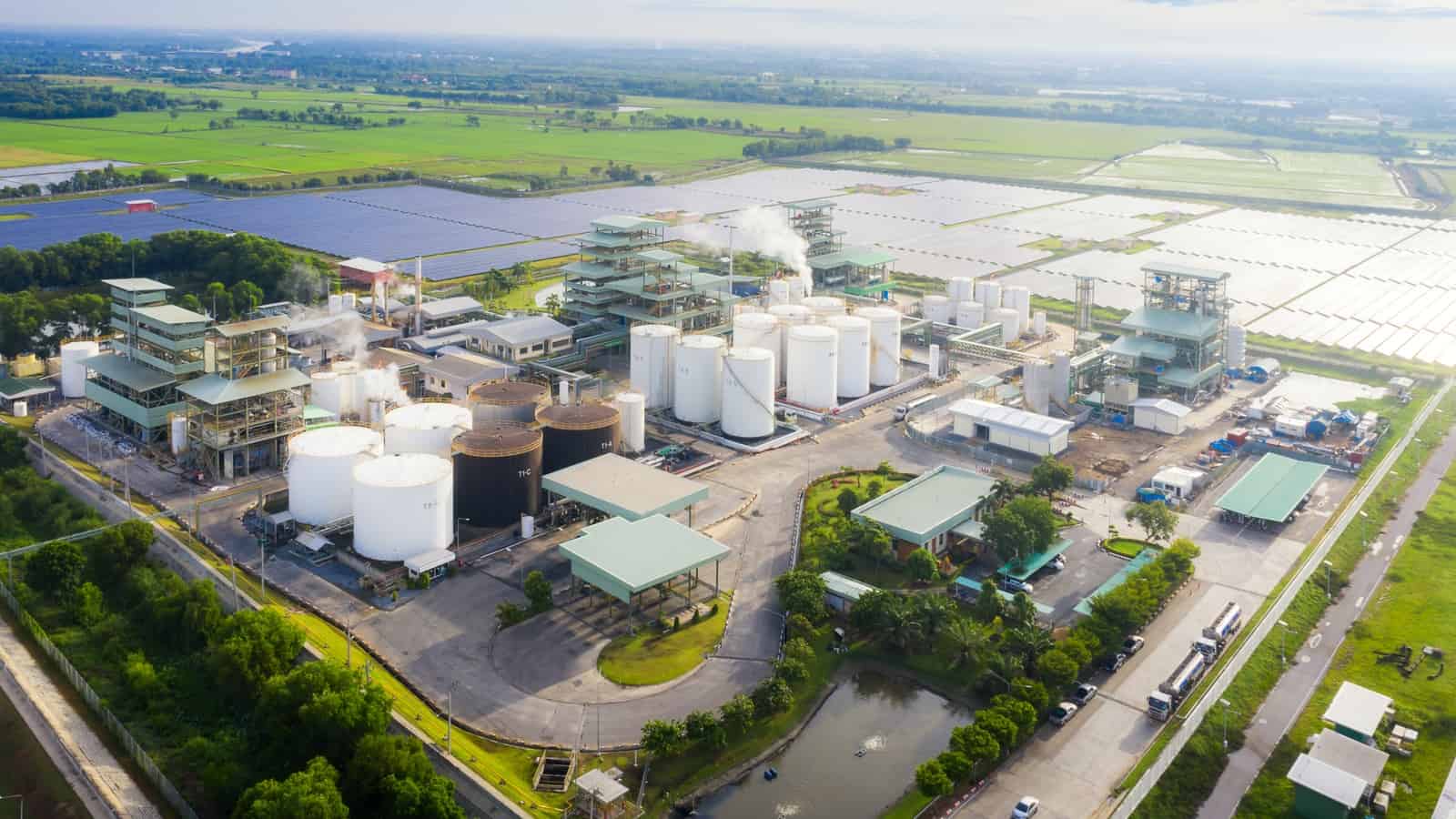
When it comes to sustainability, the question is no longer whether manufacturing needs to work to create a greener industrial future—it’s when.
To help manufacturers advance their sustainability efforts and achieve net-zero emissions by 2050, the NAM’s Manufacturing Leadership Council has dedicated the December/January issue of the Manufacturing Leadership Journal to Manufacturing 4.0 sustainability.
Key Highlights from the Latest ML Journal
- Sustainability survey: Review the results of the MLC’s latest M4.0 sustainability survey to understand manufacturing-leader sentiment about climate change. Learn how the pandemic is changing the way leaders prioritize sustainability and net-zero strategies. Plus, find out how sustainability can affect future growth and competitiveness.
- Practical examples: See what forward-thinking companies such as Procter & Gamble are doing to slash emissions and fight climate change. Also, discover M4.0 strategies and technologies to help you develop your own net-zero action plan.
- Current conversation: Understand the successes, opportunities and challenges in the race to achieve net zero by 2050. Hear from thought leaders such as MLC Co-Founder David Brousell and Lisle Corporation President Mary Lisle Landhuis.
- Potential obstacles: Learn the roadblocks to developing a sustainability program and how to overcome them. Know the challenges of adopting a circular-economy mindset and why it’s well worth having.
Why the ML Journal matters: Sustainability is just one of the exciting topics discussed in the ML Journal. Throughout the year, you’ll find case studies, interviews, technology showcases and deep insights on M4.0 from manufacturers working on the front lines. The Journal is a quick, easy way to stay current on the digital revolution—and sharpen your company’s competitive edge.
Click here to receive trial access to the entire December/January issue on M4.0 sustainability or to browse articles on a range of topics from past issues.
The “Megatrends” Are Coming: Global Predictions Manufacturers Should Know
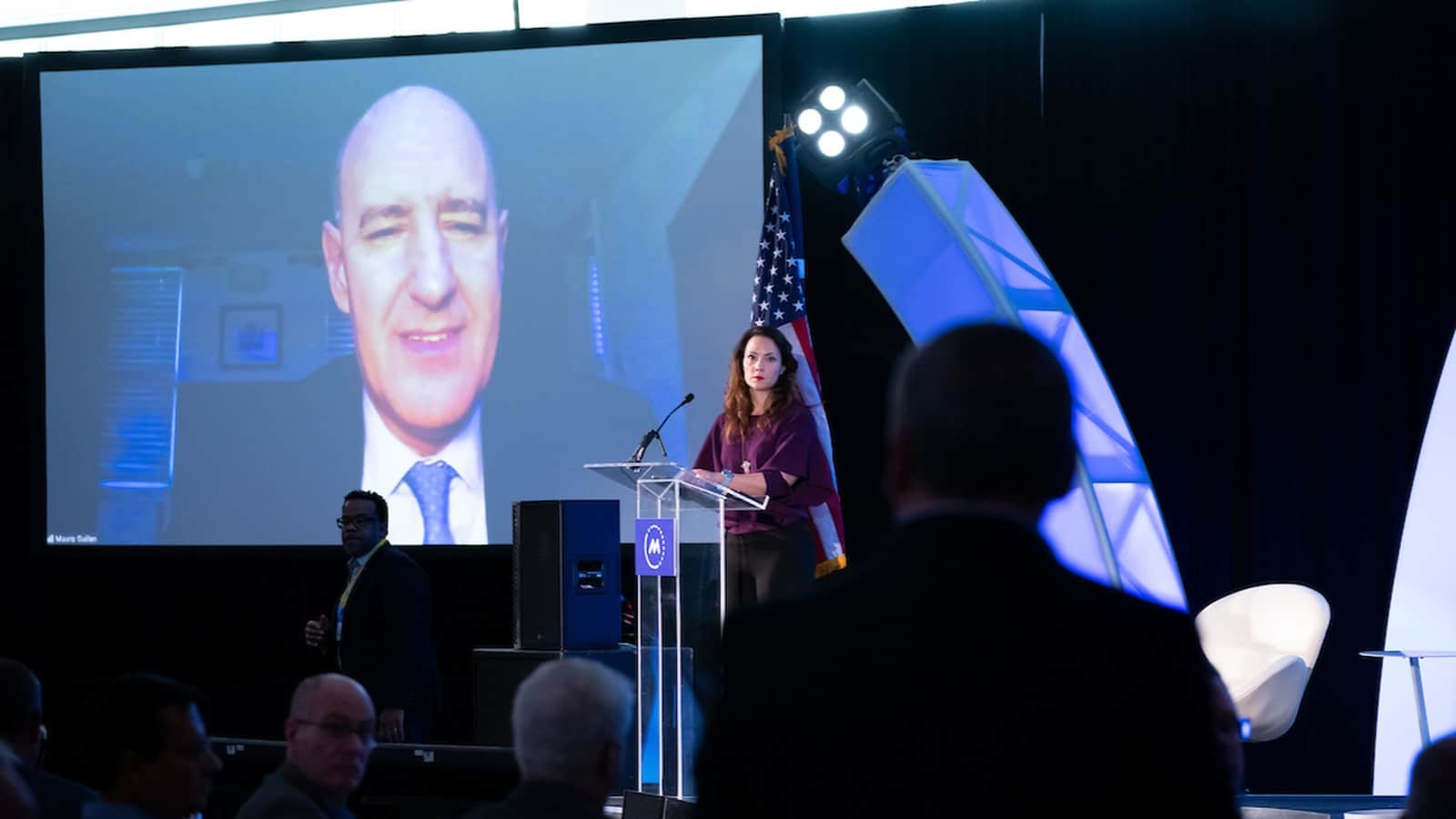
Several “megatrends” affecting manufacturers and the world at large will begin unfolding in coming years. University of Cambridge Judge Business School Dean Dr. Mauro F. Guillen made this prediction during a presentation at the recent Manufacturing Leadership Council’s “Manufacturing in 2030: The Shape of Things to Come” event.
Three trends: “Three kinds of trends … are coming together to produce a very different situation by the year 2030,” said Guillen, the author of “2030: How Today’s Biggest Trends Will Collide and Reshape the Future of Everything.” He categorized them as “population trends, trends about emerging markets and technological trends.”
Here, we break down some of the highlights from these three umbrella trends.
Durable-goods demands will start earlier—and extend later: Owing largely to immigration patterns, large durable-goods purchases will, on average, start to come earlier in life, Guillen said.
- Thus, in coming years, durable-goods manufacturers can probably expect their customer demographic to broaden to include younger people.
- At the same time, Guillen said, given that people are living longer and better, consumers will wield purchasing power for longer than they did in decades past. “There is a massive concentration of wealth in the upper age groups,” Guillen said. This will mean greater demand for certain goods, such as robotics capable of caretaking, later into people’s lives.
Purchasing-power centers will shift: Currently, the U.S. and Europe are the world’s largest consumer economies, but by 2030, those distinctions will belong to China and India, Guillen said. And by 2040, India will have eclipsed China in this regard, due to population growth.
- While older people will hold onto their purchasing power, younger consumers will hold sway for larger buys as they spend their money on homes, cars and other major purchases.
- Meanwhile, wealth accumulation will continue to grow everywhere in the world, he said, fueling the appetite for manufacturers’ goods.
Emerging markets will overtake developed ones: Manufacturers can soon expect to see emerging markets become larger than developed ones, Guillen said.
- That trend will mean a shift in manufacturer focus away from the U.S. and Europe and toward Africa and India. Said Guillen, “Sooner or later consumer markets will gravitate toward where the population is.”
The last word: Guillen’s main point of advice for manufacturers? To “identify the wave that you want to surf and take that opportunity, go with that wave. It’s so much better than going against the prevailing winds. You’ll be aligning yourself with the global economy.”
